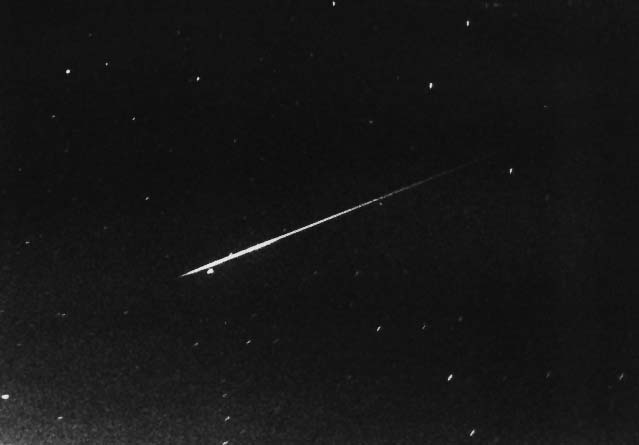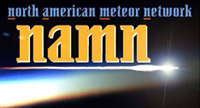
Leader: Nikola Biliskov
Members: Vanesa Ujcic, Ivor Kovic, Denis Dermadi, Sinisa Sijan
Associated members : Marko Gacesa, Slaven Garaj, Goran Zgrablic
The main goal of our group are preparations for observation of Leonids, the spectacular meteor shower expected to occur on November 17th this year. We are planning to achieve that by introducing new members into basic techniques of visual observation and data reduction, while the more experienced members would observe meteors in VLF part of the spectrum, as well as use video camera. The work will be presented on the home page of the group - here.
What is a "shooting star"?
You have certainly found yourself looking at shooting star and making a wish. But only last few centuries this phenomenon is known to astronomers as meteor. Meteors can be seen when a small particle of dust about the size of a grain of sand flies into the Earth's atmosphere with the speed of several dozen miles per hour (typical speeds range from 10 to 30 thousand miles per second). Due to aerial friction, most of those particles actually burn and evaporate in less then a second in upper part of atmosphere. Those that manage to pass through and reach the ground are called bolids or fireballs. Most of meteors originaly were a part of some comet. While traveling far from sun, comets consist of ice, dust and frozen gas (so called dirty snowball model). As the comet comes closer to Sun, the ice starts to melt

and the dust is being released from the nucleus. Those particles remain behind the comet in orbit around Sun even after the comet passes, actually tracing the path of the comet. When the Earth crosses such orbit, we can see meteor shower. Since all those particles have approximately parallel orbits, it looks like all the meteors are emerging from the same point in the sky. That point is refered to as radiant. The meteor showers are named according to location of its radiant, so we speak of Perseids, Orionids... The number of meteors in a shower is expressed by ZHR (zenithal hourly rate), which is the number of meteors that could be seen in the clear night without clouds with a limited magnitude of 6.5 if the radiant would be in zenith. Aside from meteor showers, we can see meteors unassigned to any meteor shower. Those are called sporadic meteors. They originate of old streams which were scattered due to internal impacts and influence of Jupiter and other planets.
LINKS to some meteor pages:



